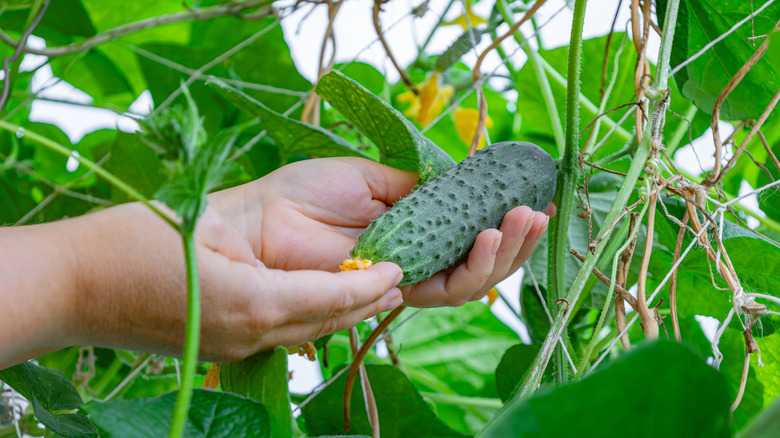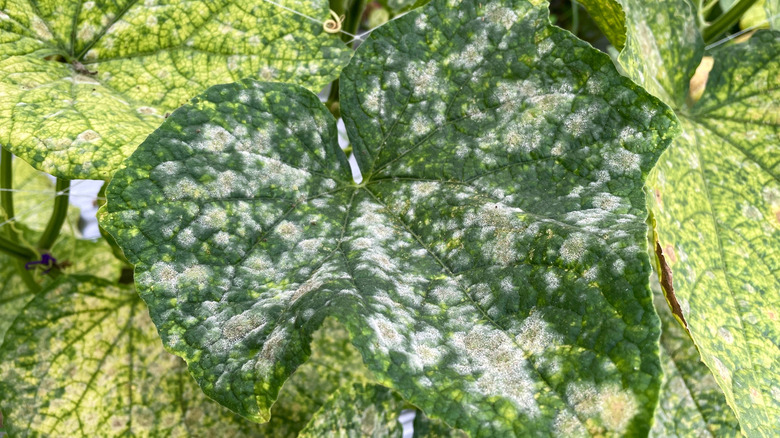This One Cucumber Watering Mistake Could Ruin Your Whole Crop
Whether you have an existing vegetable garden or you're looking to start one, cucumbers (Cucumis sativus) can make an excellent addition. Not only do cucumber plants grow rapidly, but they are also considered relatively easy to grow and maintain in USDA hardiness zones 3 to 11. These can be better choices compared with some of the most difficult vegetables to grow in your garden, such as asparagus, cauliflower, and spinach. With that said, whether or not you'll be left with a healthy cucumber plant still depends on your adherence to basic gardening rules, including proper watering techniques. You should never water cucumber plant leaves directly, as this can lead to an unhealthy crop.
Watering over a cucumber plant is one of the biggest mistakes you can make when trying to grow these plants. Doing so makes the leaves wet, which can increase the risk of common fungal diseases in these plants. In particular, cucumber plants are susceptible to both downy mildew and powdery mildew. The risk of powdery mildew is higher when the air temperatures are still cool, but humidity levels are up. Downy mildew, on the other hand, usually develops in hotter conditions in the summer and fall. Common signs of these fungal diseases include white or yellow spots along the vines and leaves, or even a powdery white appearance and texture.
How to water cucumber plants the right way
When watering a cucumber plant, you should water the roots of the plant only, ensuring that the soil is completely soaked. You can do this either with a watering can or a drip or soaker-based hose. Never place a hose or watering can over the top of cucumber plants, as you will inevitably saturate the leaves and increase the risk of fungal diseases. You should also avoid using sprinklers for watering cucumbers, as this creates the same issues.
Overall, cucumber plants need about an inch of water each week. This includes the total amount of water from rain and from watering them yourself. Adjust your hand-watering sessions accordingly depending on how much rainfall your cucumbers get. If you plants do get a lot of rain, monitor the leaves for signs of fungal growth so that you can treat powdery mildew on cucumbers and other issues before they kill your plants. Cucumber plants grown in sandier soils and those on trellises may need watering more frequently, but with less amounts at one time to prevent diseases. It's also important to allow plenty of space between cucumber plants in case any do succumb to disease, as there will be a reduced risk of spreading between plants. Plant cucumbers 8 to 10 inches away from each other in the ground, or in rows of 3 feet apart if they are on trellises. To prevent other issues, you can also consider certain companion plants that can ward off pests from cucumbers.

